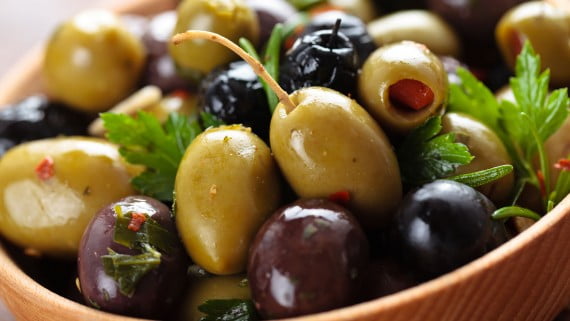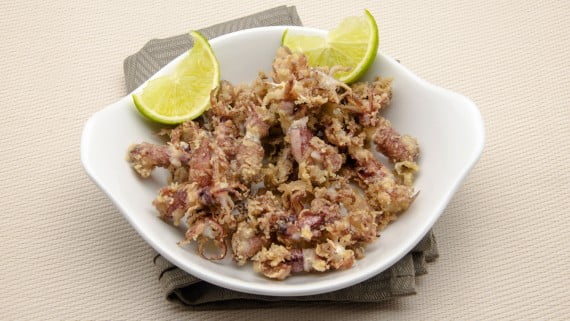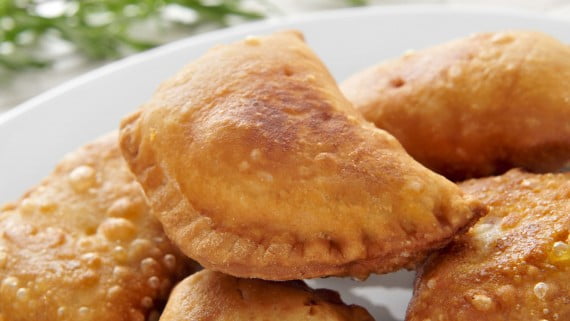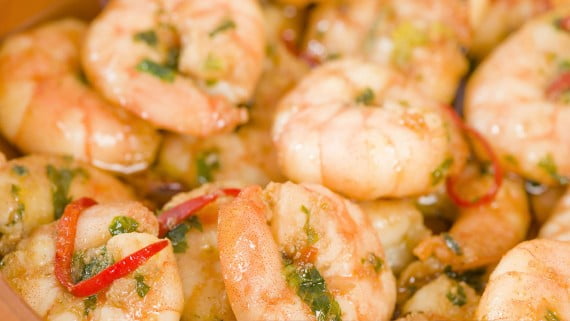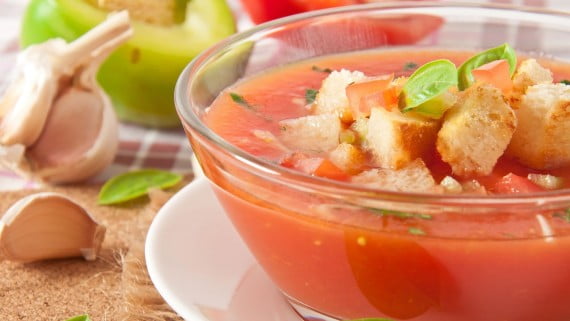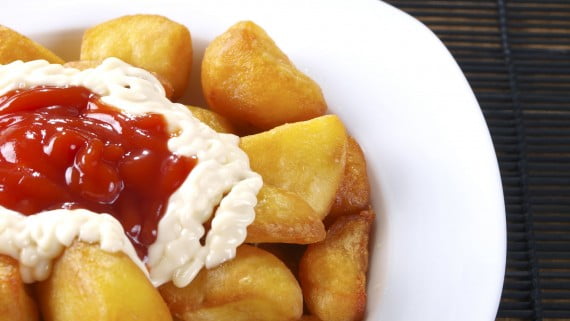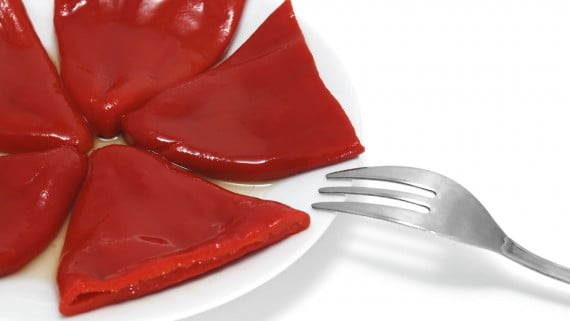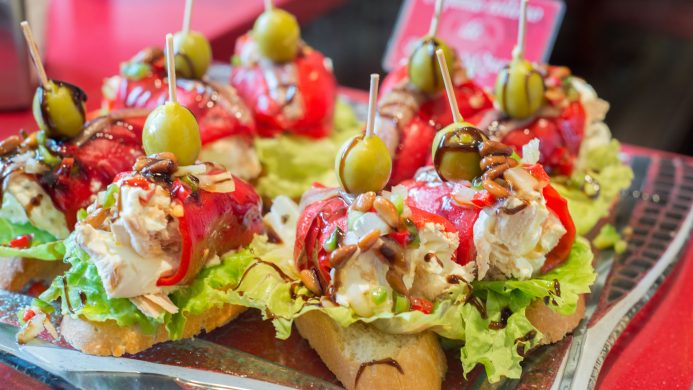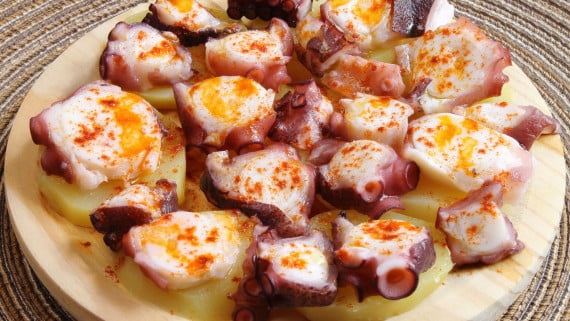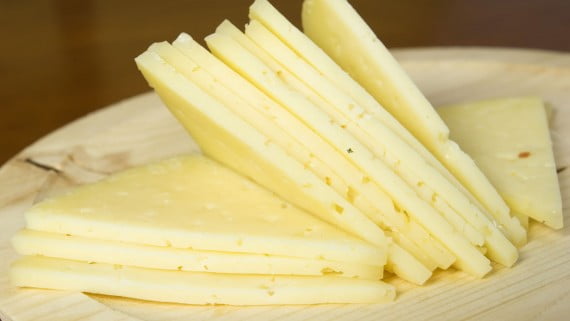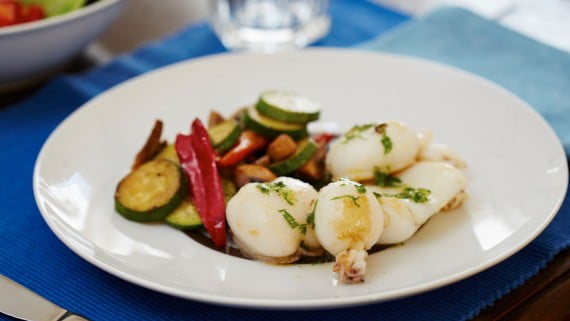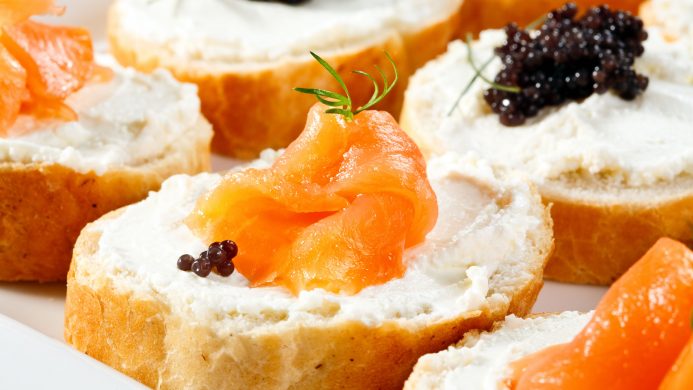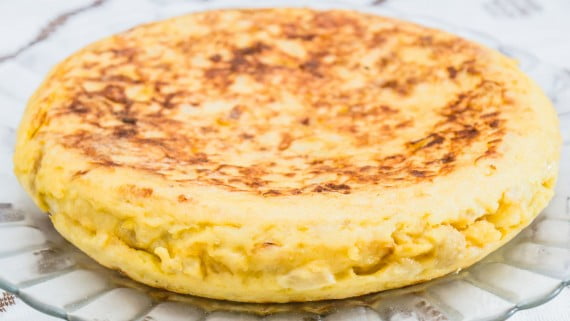Spanish tapas are a typical Spanish appetizer or starter. Known in the Basque Country by the name of skewers, you can find tapas bars in all Spanish cities. There are them from easy, fast and cheap to the most elaborate ones for a more gourmet public. If you want a typical starter in Spain, don't miss our ranking.
Below you have an index with all the points that we are going to deal with in this article.
Article Index
- 1.
- 2.
- 3.
- 4.
- 5.
- 6.
- 7.
- 8.
- 9.
- 10.
- 11.
- 12.
- 13.
- 14.
- 15.
- 16.
- 17.
- 18.
- 19.
- 20.
- 21.
- 22.
- 23.
- 24.
- 25.
Olives
Olives are considered the queens of tapas and there is a wide range of varieties of table olives, such as: hojiblanca, gordal, carrasqueña, chamomile, from Cáceres ...
The gordal variety of olives can also be combined with pickles, which creates a contrasting texture, since the gordal olives are a very meaty variety and the pickles, on the other hand, are crunchy. In any case, every olive cover always has a touch of vinegar.
There is also a variety called kimbitos, violated olives or violas, tapa that arises from the combination of the Manzanilla olive stuffed with pickles, which is usually flavored with anchovies.
Pickled anchovies
Anchovies in vinegar are a typical tapa, especially in southern Spain, that is, in Andalusia. These are clean anchovy loins marinated in plenty of vinegar, garlic and parsley.
Before serving, they should be kept bathed in vinegar for at least 6 hours at rest, so that the loins will change from having a brown color to turning white as the vinegar takes effect.
Once these hours have passed, they drain and they are served cold with plenty of minced garlic, parsley and olive oil. Anchovies in vinegar are one of the tapas that can be seen most on the trays of the bars of Spanish bars.
Squid to the Roman
Squid a la Romana are also known under the name fried squid o squid in the northern regions of Spain (Navarra, the Basque Country, Cantabria and Asturias).
These are squid cut in the shape of a ring or ring, battered in flour and fried in very hot oil (about 160 ° C). It is another of the best tapas in Spanish cuisine. They are usually taken with Mayonnaise and a lemon wedge.
They can also be taken in the form of a sandwich, also spread in mayonnaise. Their popularity is such that they can currently be found frozen in most supermarkets in the country ready to cook. Fried squid are also popular in other Mediterranean countries, such as Turkey, where they are called kalamar tawa, which does not mean anything other than fried squid in the Turkish language.
In Latin America it has become popular and is drunk seasoned with the most typical sauces of each country; thus, in Mexico they are usually eaten with tabasco or other hot sauces and in Peru they are served with creole sauce or rocoto.
Squid or lace
The fried squid cover or lace consists of small squid, which are called squid o squid (in Basque). They are also known by the name of squid in its ink o onions, when the recipe includes onion.
The way to make this tapa is the same as for squid a la romana and they can also be taken with lemon and some mayonnaise.
Croquettes
Croquettes are actually a typical dish of France, but which are currently popular in Spain, Sicily and the Netherlands. Each croquette is nothing more than a portion of dough filled with a paste made of various ingredients, among which the bechamel, which provides thickness to the mix.
Once filled, they are coated in egg and breadcrumbs and fried in abundant and very hot oil. They are shaped round or oval. The dough can be made with small pieces of ham, minced chicken, fish (usually cod), spinach, raisins, pine nuts, cheese, prawns ...
There are countless varieties of croquettes filling. There are variants of croquettes in different cultures, namely: Japanese cuisine calls them korokke and the dutch croquet. Potato-filled ones are very popular in Germany and Belgium.
Galician empanada
As its name suggests, the Galician pie is originally from Galicia. To this day, it has become popular throughout Spain, so there are many variants.
The original recipe consists of a dough made of yeast, flour and salt that is filled with tuna, onion, tomato, red pepper, garlic and  Galician empanada
Galician empanada
The origin of this tapa dates back to the time of the Goths, in the XNUMXth century, when the empanada was the ideal dish for travelers, since the contents were covered, avoiding the entry of dust from the roads.
Pasties
Empanadillas are another of the tapas that has become the most popular in all of Spain and that almost everyone likes. Actually, the recipe is very similar to that of the Galician empanada, although the difference is that these are fried in olive oil.
The dough is usually filled with minced meat and other ingredients, among which there is usually no lack of ratatouille. Its texture is crunchy on the outside and pasty on the inside.
In general, dumplings are filled with savory ingredients, but there are also sweet potato, walnut or quince paste cakes, which are really nothing more than sweet dumplings. The dough is made in the shape of an omelette and sealed with the tines of a fork.
There are variants of the empanadilla internationally, such as the Samosa and alloo foot of India or the spring roll of the Chinese gastronomy.
Russian salad
The Russian salad, also called Olivier salad, is a typical dish of Russia, hence its name. Its base ingredient is potatoes and the rest of the ingredients vary by region.
In general, tuna and cooked eggs are not missing. There are also variants that include shrimp, chicken, peas, crab sticks, olives, bell peppers, etc.
The name of Olivier salad is due to its creator, Lucien Olivier, a renowned chef in Moscow (Russia), who made the first Russian salad dish in 1860 in his restaurant called Hermitage. This tapa is also very popular in Mexico and the Southern Cone. It is taken cold.
Garlic prawns
Garlic prawns are common especially in southern Spain and in the center of the country. The main ingredient are peeled prawnsas well as garlic and olive oil. They are usually served in a clay pot with a little parsley sprinkled on top.
In some variants, some chilli slices are added to give them a spicy touch, and others include a splash of sherry. They are served at a warm temperature and are usually accompanied by a glass of wine, either white, black or red.
Andalusian gazpacho
The Andalusian gazpacho is actually a kind of cold soup which is made with olive oil, vinegar and raw vegetables, all crushed. Among the vegetables that are included are tomatoes, cucumbers, peppers, onions and garlic.
It is a typical dish of Andalusia, hence its name, which is eaten especially in the summer months. Their color is usually reddish, orange or slightly orange. This color depends on the maturity of the tomatoes used.
The first dishes of Andalusian gazpacho are estimated to date from the time of al-Andalus, since this was the typical dish that the Iberian peasants of the time ate.
Broken or smashed eggs
The typical Andalusian tapa called smashed eggs o broken eggs consists fried eggs in oil (olive or any other variety) that are accompanied with French fries and ham, bacon (bacon) or some sausage, such as chorizo or chistorra.
This dish is always eaten hot and there are those who eat it for breakfast. There are some variants of this tapa in which the eggs are served scrambled instead of fried and chips are used instead of French fries.
Iberian Ham
Iberian ham is a classic of Spanish tapas and the Spanish cuisine usually. There are different varieties, the most prestigious being the well-known black leg ham, which comes from the Iberian pig fed on acorns. This variant of ham is often considered a gastronomic luxury and is used in gourmet cooking.
The quality of Iberian ham is measured according to the purity of the breed of the animal; thus, to be considered Iberian ham as such, it must contain a minimum of 50% purity. Apart from the Iberico ham of pata negra or acorn-fed, there are other variants, of lower quality: Iberian bait ham, Iberian bait ham, and Iberian bait ham.
Mussels to the vinaigrette
The tapas of mussels a la vinaigrette consists of steamed mussels in a vinaigrette sauce, which is made with vinegar and oil and is a very popular dressing in the gastronomy of Spain. Mussels can be served with minced vegetables, although this is optional.
Those that are considered to be of better quality are mussels of Galicia, which are raised in the Galician estuaries.
Shepherd crumbs
Bread crumbs, ruffles or shepherd's crumbs are made with pieces from the soft and fluffy part of the bread, that is, the part inside. This cap is considered a typical dish of the shepherds, since in the past they were made with leftover stale bread and, today, they are still made this way.
In the southeast of Spain, they are made with flour crumbs. They are typical of the interior of Spain, in particular of La Mancha, the Montes de Toledo, La Jara, Murcia and Castilla y León. They are accompanied with a wide variety of salty foods such as fried eggs, chorizo, longanizas, fried peppers, sardines, etc. Actually, the origin of this dish is the Maghreb couscous.
Tumaca bread
The name of tumaca bread comes from Catalan and has other names such as Pa Amb Tomàquet, pa amb tomato o pa amb tomaca. This tapa is nothing more than toast of bread with tomato and seasoned with olive oil and salt.
This dish is typical of the catalan cuisine, Aragonese, Valencian and Balearic, and is very similar to the Bruschetta Italian. They are representative of the Mediterranean diet and Catalan cuisine in general.
In the original recipe, the ripe raw tomato is rubbed on a slice of bread, although there are also versions that spread crushed natural tomato on the bread and others that add a slice of Serrano ham.
Spicy potatoes
Patatas bravas or, simply, bravas, are a tapas that is especially known throughout Spain and cannot be missed when eating or dining. tapas. This tapa is very easy to prepare, as it consists of diced potatoes that are fried in oil and served with spicy tomato sauce and garlic oil or aioli.
This tapa is served hot. Besides being easy to prepare and very inexpensive, this dish is suitable for vegetarians.
Piquillo peppers
The piquillo or piquillo peppers are a variety of pepper that is produced in the Foral Community of Navarra (Spain), more specifically in the Lodosa region.
Their shape is triangular and not too large (about 7 cm long) and they are deep red in color. As a lid, they are served roasted and covered in oil and salt. There are variants in which they are filled with bonito, meat, potato omelette or blue fish.
Moruno skewers
The Moorish skewer consists of several pieces of meat nailed to a wooden stick that is called skewer. Its origin is located in the regions of Ceuta and Melilla, and they have Arabic origin; in fact, they are very similar to kebab (which means roasted over the coals) or shish kebaba Iranian.
In the past, meat was pierced on wooden sticks so that those who cooked it did not burn their hands over the fire, that is, the skewer that we know today was a kitchen utensil for our predecessors. Nowadays, the skewer is still put on because that is how tradition governs it.
The marinade for the Moorish skewers is made with cumin, ground black pepper, ginger, sweet paprika, turmeric and saffron, hence its orange or even reddish color. As for meat, it is usual to lamb, although you can use chicken, beef or pork as well. They are usually cooked on the grill, but they can also be done in a pan or on a griddle.
Basque pintxos or pinchos
The skewers o pintxos in Euskera they are the equivalent of the classic Spanish tapas from the Basque Country. They consist of a small slice of bread on which a small portion of food is added. They are small appetizers open to the imagination of those who prepare them.
Skewers differ from tapas because they tend to be larger and are ordered separately, that is, in bars they are not served as a companion to the drink. The original cold skewers are usually placed on the bar on a tray so that the customer can take them at will.
A toothpick is usually pricked over them (hence the name skewers) so that, once the diner has finished, the waiter can count the total number of chopsticks and, in this way, calculate the amount to pay. In San Sebastián and Bilbao, on the other hand, it is customary to throw them on the ground.
Galician octopus
Galician octopus or powder to fair in Galician it is a dish from Galicia whose consumption has spread to all of Spain given its popularity. This is octopus cooked in a copper pot in boiling water.
The cooking process is carried out three times, that is, it is put in boiling water for a few seconds and extracted, a process that is repeated up to three times. This is done to soften the nerve and the process is called frighten, and it is done so that the octopus conserves the skin after cooking. It is especially consumed in the fairs or pilgrimages of Galicia, as well as in El Bierzo (León).
Manchego cheese
Manchego cheese is protected with the Denomination of origin of La Mancha. It is a type of cheese made from La Mancha sheep's milk. It is a fatty cheese, firm, compact and ivory-yellow in color.
It is covered by a hard bark that can be yellowish or greenish or black, depending on the brand. It is usually eaten with Iberian ham.
Cordovan salmorejo
Cordovan salmorejo is a typical tapa from Córdoba, Andalusia, as its name suggests. It is a Butter or puree that can be eaten as a tapa or also as a main dish or starter.
It is made from crushed bread crumbs, which are called pounded o telera, to which garlic, olive oil, salt, tomatoes and vinegar are added. It is common to serve it with ham shavings, croutons or pieces of hard-boiled egg on the surface.
Grilled cuttlefish
It is a simple tapa to prepare and requires just a few small basic steps. Its ingredients are cuttlefish, which can be either fresh or frozen, garlic, parsley, olive oil and salt.
For its preparation, the cuttlefish must be cooked in a very hot pan and sautéed until it changes color. Once all the water has been released, add oil to the pan and heat it over high heat again for 2 or 3 minutes. Finally, the touch of oil is added, chopped garlic and parsley.
Christmas tapas
Christmas is a time open to the imagination of every family, bar or restaurant. However, there are a series of easy and original tapas recipes to make at home that can be prepared at home, such as canapés. It is an ideal Christmas dish to surprise.
The canapés, like skewers, they are slices of bread on which various ingredients are added: from fresh cheese to pâtés of all kinds. They are eaten as a starter, appetizer or appetizer, and it is usual to eat them cold.
Smoked salmon canapes with spread cheese and caviar, for example, are common. The assorted patés or foie gras they are also common in most Spanish houses. But there are much more elaborate ones, as much as you like: anchovies, piquillo peppers, goat cheese with caramelized onion ...
Omelette
The potato omelette is also known as Spanish tortilla, as it is one of the most classic dishes in Spanish cuisine. It consists of an omelette (beaten eggs) with potatoes and onions, the latter being an optional ingredient. Some people add yeast to it during its preparation so that the result is a thicker, taller and fluffier omelette.
Many tapas bars of Madrid They serve the so-called tortilla brava, which includes the same spicy tomato sauce that is used in patatas bravas. If you are looking for where to have tapas in Madrid, we recommend you go somewhere where this delicious appetizer is served.
This article has been shared 436 times. We have spent many hours collecting this information. If you liked it, share it, please:

